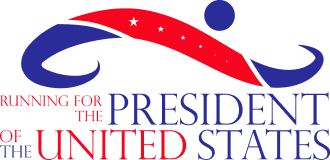Immigration reform
Addressing immigration issues through a plan involving work permits and facilitated travel to migrants’ home countries is not just pragmatic but also humane. Here’s a comprehensive outline of how this plan can be structured with confidence:
- **Efficient Work Permit Process**:
– **Streamlined Application**: We’ll establish a user-friendly process for work permits, minimizing bureaucratic hurdles with online options and multilingual support.
– **Transparent Eligibility Criteria**: Clear guidelines based on job opportunities, skills, and local labor needs will ensure fairness and efficiency.
– **Temporary Work Permits**: Tailored permits for seasonal industries like agriculture and hospitality will address short-term labor shortages.
- **Partnerships with Employers**:
– **Employer Sponsorship**: Employers can sponsor permits, ensuring job legitimacy and fair conditions.
– **Industry Agreements**: Sector-specific agreements will protect workers’ rights and ensure a steady labor supply.
- **Regularization Programs**:
– **Pathways to Legal Status**: Undocumented immigrants meeting residency and employment criteria can regularize their status.
– **Consider Amnesty**: Amnesty programs for long-term residents or family-connected migrants will be explored.
- **Border Management and Security**:
– **Effective Border Controls**: Strengthened border measures will curb illegal entry while facilitating legal migration.
– **Digital Monitoring**: Biometric and digital tracking systems will ensure compliance with visa conditions.
- **Travel Flexibility**:
– **Multiple-Entry Visas**: Migrants will have multiple-entry visas to maintain family ties and ease long-term separation.
– **Reentry Permits**: Hassle-free reentry permits for work permit holders will facilitate travel between countries.
- **Integration and Support Services**:
– **Language and Training**: Support programs will help migrants integrate into society and the job market.
– **Legal and Social Assistance**: Access to legal aid, healthcare, and social services will ensure their well-being.
- **Bilateral Agreements**:
– **Home Country Collaboration**: Bilateral agreements will facilitate labor flow, protect rights, and promote circular migration.
– **Reintegration Support**: Programs will assist returning migrants in reinvesting skills and savings in their home countries.
- **Data-Driven Policy Making**:
– **Labor Market Analysis**: Continuous data analysis will inform adaptive immigration policies.
– **Evaluation Mechanisms**: Robust monitoring will gauge policy impact on the economy, labor market, and migrant communities.
- **Community Engagement**:
– **Stakeholder Participation**: Involvement of local stakeholders will ensure policy relevance and garner support.
– **Public Awareness Campaigns**: Educational initiatives will dispel myths and emphasize the benefits of managed migration.
By confidently implementing this plan, we’ll foster a balanced system benefiting both host countries and migrants, with due consideration for economic needs and humane treatment.

